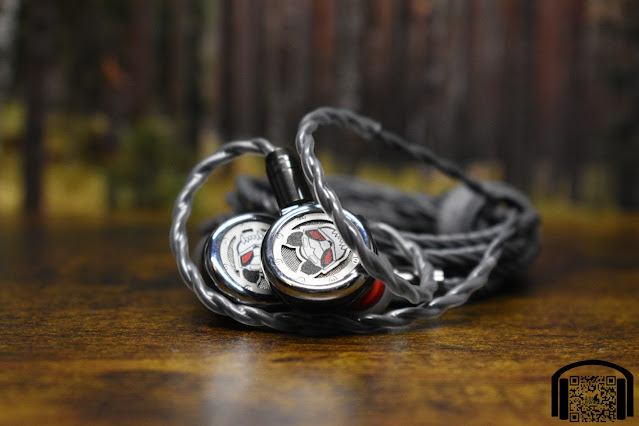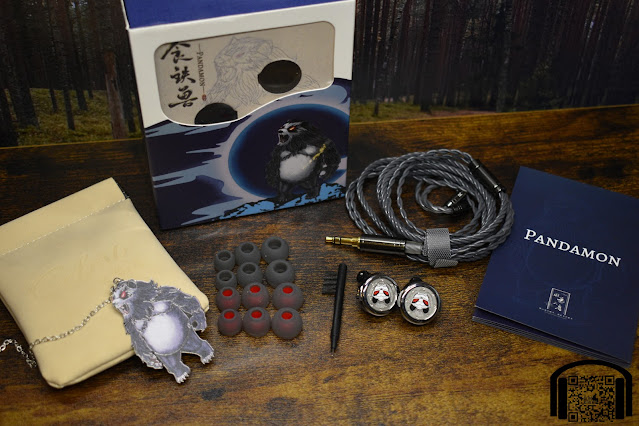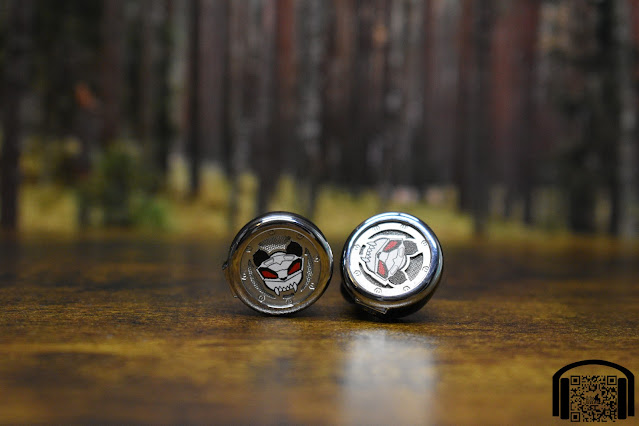- Get link
- X
- Other Apps
English | Español
TLDR version on YouTube: TDLR - Celest Pandamon (by Kinera)
The (Kinera) Celest Pandamon were sent to me by Linsoul in exchange for the publication of this review. I have not received any specific requests or comments and will try to be as unbiased and sincere as humanly possible, as usual.
You can find the Pandamon via Linsoul here: https://www.linsoul.com/products/kinera-pandamon
As always, all links that I share are non-affiliate.
To avoid being repetetive in my reviews, you can find all the info about how I create the reviews, equipment used, how I receive the products and how to interpret my reviews by visiting: About my reviews
Intro…
I have to say that when I received the Pandamon, I was rather surprised and had absolutely no idea what to expect. In my normal procedure, I didn’t do any research into the model and had absolutely no idea what they were, except for something with an angry panda on the box (and IEMs).
After finally listening to them for a while (and being quite surprised at what I heard), I finally got around to doing some research. Selling for just under 50€ (at the time of this review) they feature a 10mm square planar driver with an impedance of 9 Ohms and are actually made by Kinera. Linsoul actually shows them as Kinera Pandamon on their site, whereas the box does mention Kinera in one of the contact options but the rest just refers to Celest.
So, now that we know what they are, let’s talk about how they perform.
Presentation…
I can do nothing but give them full marks for originality. The box shows a very angry looking panda, with a transparent window above that lets us see the IEMs in the interior.
Inside the box we find, along with the IEMs, 6x sets of silicone tips (in two types), the cable, a storage pouch (of the type with a spring loaded closure), a cleaning brush/tool, a small booklet and some kind of pendant that also shows the angry panda with a small silver coloured chain that runs to a small plaque at the other end with Celest engraved on it.
The presentation keeps up with the Pandamon theme throughout, even telling the story on the outside of the box.
Again, all I can do is give them points for originality (whether the theme is something I like or not).
Build and aesthetics…
The first thing that obviously jumps out at us is the Pandamon face on the IEMs faceplate. The IEMs are round and the faceplates have a silver metal theme going on, although they are made from plastic. There are openings on the faceplate with mesh behind which make them look rather open, although, as in most cases, they are not as open as the meshing would lead us to believe.
The IEMs are incredibly lightweight and I find them to fit comfortably in my ears, feeling absolutely no fatigue from the fit even after hours and hours of use. The build also seems to be pretty good, with all the small details of the faceplate (which are quite complex) looking well done even upon closer examination.
To be honest, I am not a fan of the aesthetics of the Pandamon, I don’t think I would find myself wearing these out in public, just not my style. Yet, again, they are definitely original and may be much more appealing to a different (younger?) audience.
The included cable is also decent, although I am not really a fan of the plasticy finish of it. The connectors are metal and the cable is comfortable and non-tangly (which is a word that I am sure doesn’t exist), it is just that outside material that doesn’t appeal to me.
Sound…
All tracks mentioned are clickable links that allow you to open the reference track in the streaming service of your choice (YouTube, Tidal, Qobuz, Spotify, etc.)
As I said, when I started listening to the Pandamon, I didn’t know what to expect. I guess my mind automatically thought they would be some sort of V shaped tuning aimed at the masses, based on the aesthetics (preconceived opinions are always there, no matter how we try to avoid them), but they are certainly not that. In fact, they present a tuning that I am quite fond of.
Here is the usual graph comparison between them and my personal preference target:
We can see on paper that they are not that far away from my preferences, which doesn’t automatically mean that I will like them but I do find that I have enjoyed listening to them.
Starting with the subbass, these are definitely not IEMs that are aimed at giving you a lot in these lower ranges. They are rather calm in the subbass region, without any additional boost in comparison to the mid bass. “Chameleon” can come across as a little thin in the low end, even to my tastes (being someone who is by no means a bass head). This doesn’t mean the subbass is bad, just that it is not really that present.
Moving into the midbass, it is again not something that is going to appeal to those who like a boosted low end. The low end is quite calm in general. The performance of the planar driver is decent and all notes in the midbass are clearly defined but Ido thing that some people will find it lacking some warmth for their tastes. Listening to “Smooth Operator”, the bass guitar is very clear but does not really have a lot of “body” to it.
This does make vocals, like Sam Smith in “HIM”, take a step forwards and the piano take a little bit of a background role. This can be very enjoyable for those moments when you want the vocals to take the front stage but I wouldn’t recommend these to those who want to listen to things like EDM with a nice bass presence. Again, the bass is very clear and is not missing, it just doesn’t have the body and warmth that many other sets do.
Towards the top of the midrange, there is quite a smooth climb to the main presence point just over 2kHz and this forms part of that extra step forwards in vocals that I just mentioned. For example, “Sittin’ On The Dock Of The Bay” places Sara Bareilles very upfront. I do find this very enjoyable for a lot of my vocal centric music yet, for something more rock orientated, such as “Bombtrack”, it can place a lot of emphasis on the midrange of the guitar.
The treble range is quite smooth and while there isn’t a huge amount of air, the overall sound signature does make things seem a little more present in these ranges. Sibilance is pretty well controlled, without things coming across as harsh in these upper ranges.
Details are not great although the tuning does help with being able to appreciate those that are there. By this I mean that the Pandamon are not going to suddenly reveal things never heard before but at the same time, they never come across as overly blunt in this regard. Specifically focusing on certain background details that I know are there, they can be heard on the Pandamon but they don’t jump out at you.
Soundstage is another of those that I find to be around average with image placement being good but certainly not pin point. Separation of the layers in vocals in “Strange Fruit” is acceptable but I wouldn’t say it is amazing.
Isolation is quite a way below average but as I said earlier in the review, I can’t see me going out in public with these IEMs anyway, so noise shouldn’t be an issue 😉
Conclusion…
I have been pleasantly surprised by the Pandamon, they certainly aren’t what I thought they were going to be when I first opened them. The sound signature is something that gets close to my preferences and although I would like a little more in the low end (which is something I don’t say often), in general they are a nicely balanced set of IEMs for those who want a more “neutral” sound.
The details are not the best but they are not bad either and the overall presentation of the IEMs is something that I find non-offensive and fairly well done. Yes, there are points that can be improved but that is usually the case with most IEMs.
I am not a fan of the aesthetics but that is obviously something very personal. I am just not one for wearing cartoon characters, I guess I am more of the boring type for that kind of thing.
They are certainly something different and it is always refreshing to see things on my desk that break away from the routine, whether I like them or not. In this case, I have enjoyed listening to them.
All FR measurements of IEMs can be viewed and compared on achoreviews.squig.link
All isolation measurements of IEMs can be found on achoreviews.squig.link/isolation
To comment or contact, visit any of the following social media platforms:





.png)
.png)

